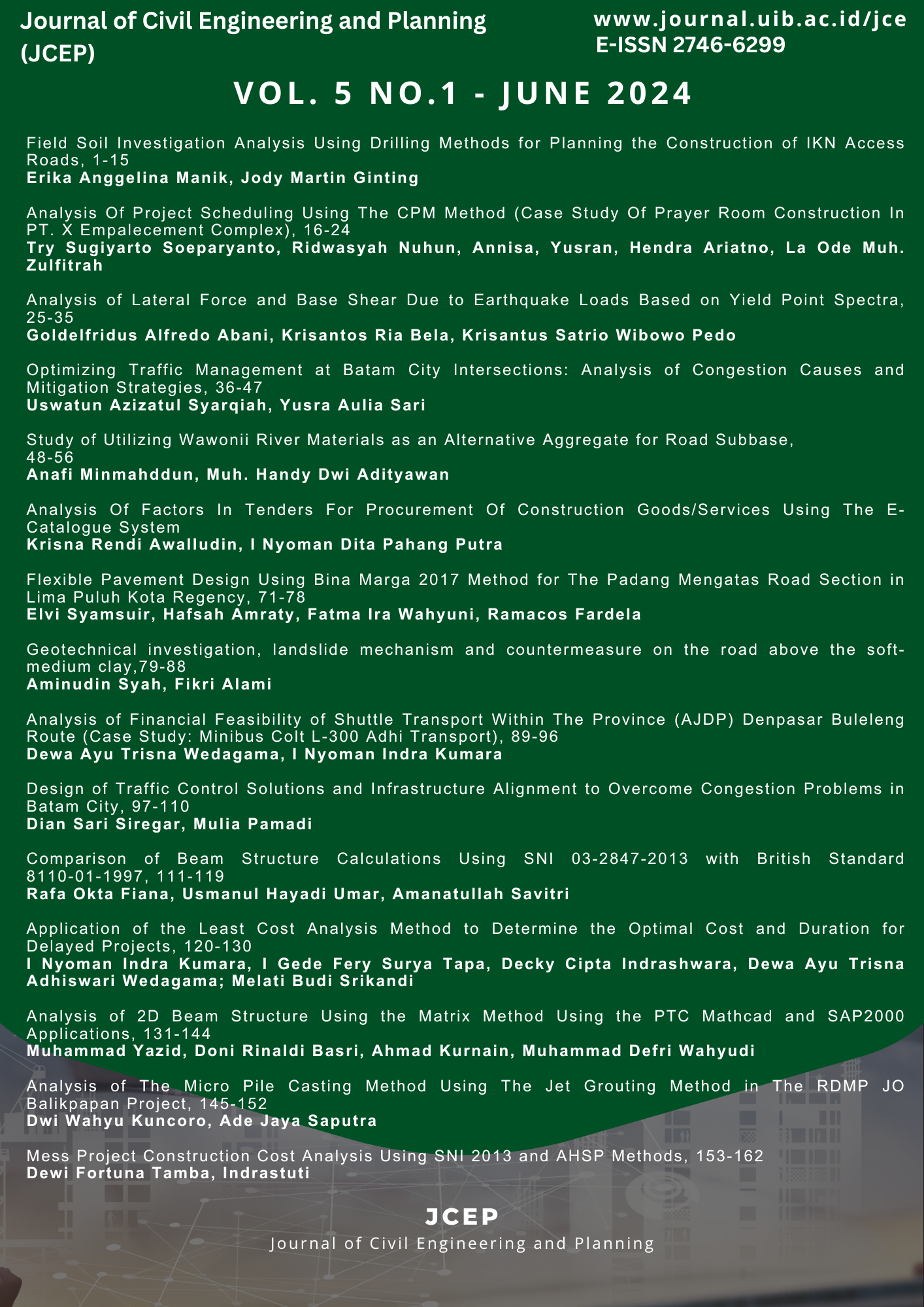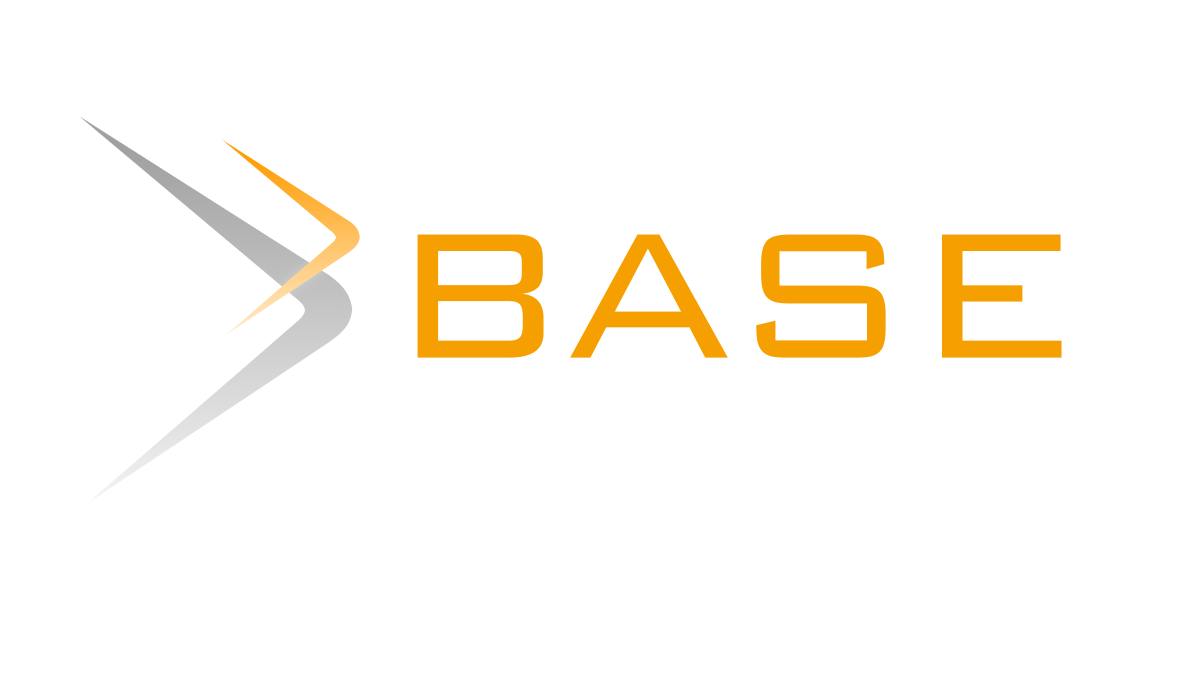Application of the Least Cost Analysis Method to Determine the Optimal Cost and Duration for Delayed Projects
DOI:
https://doi.org/10.37253/jcep.v5i1.9303Keywords:
Least Cost Analysis, Optimasi, Tenaga KerjaAbstract
The construction project of the Polresta Denpasar Multi-Purpose Building experienced delays due to the Eid al-Fitr holiday, resulting in a 9.35% setback, equivalent to 19 days. In the 20th week, the planned progress was 66.52%, but actual progress was only 57.17%. With 76 days remaining for the project's completion, the least cost analysis method was applied to find the optimal cost and time for completing the remaining work by increasing the workforce. This approach aims to ensure the project is completed on time and the contractor avoids penalties. The penalty is 1/1000 (1 ‰) of the contract value. The analysis used primary data such as interviews and project observations, and secondary data including contractor unit price analysis, budget plans (RAB), and S-curves. The data was analyzed from the remaining project work, crashing duration, to finding the cost slope for each task, and then using the least cost analysis method to determine the optimal cost and time. The analysis results showed that the optimized project cost after acceleration was Rp 3,077,713,130.90, with the project duration reduced from 76 days to 57 days, accelerated by 19 days. This acceleration saved costs by Rp 18,428,493.93. By applying this method, the project is expected to be completed faster without compromising quality, and the contractor can avoid delay penalties. This approach helps in time efficiency and budget management, ensuring all resources are used optimally and the project is completed on target.
Downloads
References
D. Asmaroni, and F. Zabadi, “Productivity Analysis of Construction Workers During The Tobacco Growing Season in Sampang Regency, ” Journal of Civil Engineering and Planning (JCEP), vol. 4, no, 1, pp. 82–93, 2023.
G. J. Johari and A. Gunawan, “Analisa Faktor yang Mempengaruhi Keterlambatan Proyek Infrastruktur di Kabupaten Garut,” Jurnal Konstruksi, vol. 19, no. 1, hal. 80–89, 2021.
A. A. D. P. Dewi, A. A. G. A. Yana, and K. Y. Dwinanjaya, “Optimalisasi Waktu dan Biaya Pelaksanaan Proyek Menggunakan Metode Least Cost Analysis (Studi Kasus: Pembangunan Pasar Amlapura Barat),” Jurnal Ilmiah Teknik Sipil, vol. 24, no. 2, hal. 168–174, 2020.
M. W. Jayantari, I. M. A. Predana, and Y. R. Wade, “Analisis Biaya Serta Percepatan Durasi Proyek Menggunakan Metode Crashing dengan Sistem Waktu Gilir Kerja dan Lembur (Studi Kasus: Puskesmas Wolowaru, Kabupaten Ende),” Reinforcement Review in Civil Engineering Studies and Management, vol. 1 no. 1, hal. 20–26, 2022.
N. Sa'adah, and T. Rijanto, “Evaluasi Proyek Pembangunan Gedung Stroke Center (Paviliun Flamboyan) Menggunakan Metode Critical Path Method (CPM) dan Crashing,” Publikasi Riset Orientasi Teknik Sipil (Proteksi), vol. 3 no. 2, hal. 55–62, 2021.
F. S. Handayani, S. Setiono, and W. Winarto, “Pengendalian Biaya Bahan dengan Metode Analisa Varian pada Pelaksanaan Proyek Konstruksi (Studi Kasus Proyek Rehabilitas Kantor Dirut PT. Taspen, Jakarta Pusat),” Matriks Teknik Sipil, vol. 5 no. 3, hal. 838–843, 2017.
R. Setiawan, T. Rahman, and M. Jamal, “Optimalisasi Biaya & Waktu Pekerjaan pada Saluran Pelimpah (Spillway) dengan Menggunakan Metode Least Cost Analysis,” Teknologi Sipil, vol. 4, no. 1, hal. 57–68, 2020.
F. Nabila, “Analysis of Time and Cost Optimization in Building Contruction Using Time Cost Trade Off Method,” Journal of Civil Engineering and Planning (JCEP), vol. 4, no 2, pp. 199–210, 2023.
S. K. Biswasa, C. L. Karmakera, and T. K. Biswasa, “Time-Cost Trade-Off Analysis In A Construction Project Problem: Case Study.” International Journal of Computational Engineering Research (IJCER), vol. 6 no. 10, pp. 32–38, 2016.
D. Asmaroni, and F. Zabadi, “Productivity Analysis of Construction Workers During The Tobacco Growing Season in Sampang Regency, ” Journal of Civil Engineering and Planning (JCEP), vol. 4 no, 1, pp. 82–93, 2023.
I. N. I. Kumara, “Penerapan Metode Least Cost Analysis Untuk Optimasi Percepatan Waktu Pelaksanaan Proyek,” Reinforcement Review in Civil Engineering Studies and Management, vol. 2, no. 1, pp. 8–24, 2023.
I. N. I. Kumara, N. M. Jaya, and I. B. P. Adnyana, “Upaya dan Strategi Peningkatan Kualitas Pelayanan pada Pembuatan Izin Mendirikan Bangunan di Kabupaten Badung,” Jurnal Spektran, vol. 10, no. 2, pp. 127–132, 2022.
Downloads
Published
Issue
Section
License
Copyright (c) 2024 I Nyoman Indra Kumara, I Gede Fery Surya Tapa, Decky Cipta Indrashwara, Dewa Ayu Trisna Adhiswari Wedagama; Melati Budi Srikandi

This work is licensed under a Creative Commons Attribution 4.0 International License.



_0011.jpg)









